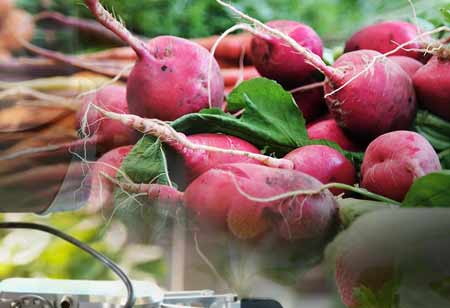THANK YOU FOR SUBSCRIBING
Be first to read the latest tech news, Industry Leader's Insights, and CIO interviews of medium and large enterprises exclusively from Food and Beverage Tech Review
What are the Various Types of Food Processing Methods?
Food processing is the transformation of agricultural products into food or the transformation of one type of food into another.

By
Food and Beverages Tech Review | Sunday, April 24, 2022
Stay ahead of the industry with exclusive feature stories on the top companies, expert insights and the latest news delivered straight to your inbox. Subscribe today.
Food processing facilities come in a variety of setups. Certain nourishments require almost no preparation, for example, an apple that can be picked straight from the tree and eaten immediately. Others are unappealing unless they are prepared according to standardized recipes.
Fremont, CA: Food processing is the transformation of agricultural products into food or the transformation of one type of food into another. Food preparation encompasses a variety of nourishment processing techniques, ranging from pounding grain to making crude flour to home cooking to complex modern strategies for preparing comfort foods. Certain food preparation strategies play a significant role in reducing food waste and enhancing food protection, thereby reducing horticulture's overall ecological impact and increasing food security.
Here are the various types of food processing methods:
Primary food processing
Primary food preparation is the process of transforming crude horticultural items into easily disposed of nourishments. At times, once primary processing is complete, the food is appropriate to be discarded. Jerky made from smoked meat is an example of this. In some cases, immediate processing converts the agricultural item into a fixing that can be transformed into a consumable food, such as when the grain is processed to make flour.
Secondary food processing
Secondary food processing is the procedure for utilizing primary food preparation fixings to create ready-to-eat nourishment. A good example of this is using flour to make the batter and preparing the mixture for bread making. Various models incorporate the aging of grape juice with wine yeast to create wine and the use of ground meat to create hotdogs.
Tertiary food processing
Tertiary food preparation encompasses many ready-to-eat foods, such as frozen pizzas and packaged snacks. Typically, the term "handled food" refers to food items produced through tertiary food preparation in new food industries. Corn is then developed and nixtamalized – the process by which it becomes a soluble arrangement – before being incorporated into the batter. At that point, the batter is most suitable for making tortillas, which can then be cut and heated into chips. Certain foods require varying degrees of processing to achieve their final, consumable structures. When carried out on a modern scale and contained in impenetrable sacks, this cycle incorporates tertiary food processing strategies after primary and secondary preparation.
I agree We use cookies on this website to enhance your user experience. By clicking any link on this page you are giving your consent for us to set cookies. More info







